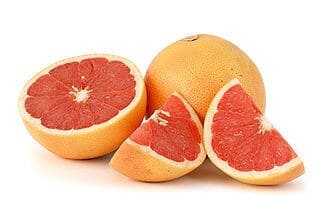The citrus flavor and aroma of grapefruit — already used in fruit juices, citrus-flavored beverages, and prestige perfumes and colognes — may be heading for a new use in battling mosquitoes, ticks, head lice and bedbugs thanks to a less expensive way of making large amounts of the once rare and pricey ingredient, a scientist said here today.
A report on the new technology for making the ingredient, nootkatone, which previously had to be harvested from tons of grapefruit, was part of the 246th National Meeting & Exposition of the American Chemical Society (ACS), the world’s largest scientific society. The meeting, which includes almost 7,000 reports on new advances in science and other topics, continues here through tomorrow.
“A new product based on nootkatone would have multiple advantages over existing mosquito repellants based on DEET,” said Richard Burlingame, Ph.D., who presented the report. “Nootkatone is a broad-spectrum ingredient that has been shown to be effective as a control agent for mosquitoes, ticks and bedbugs. Nootkatone has been used for years to give beverages a grapefruit flavor. It is safe to eat, has a pleasant citrus flavor, is not greasy, both repels and kills insects, and should not have the toxicity concerns that exist for DEET.”
Burlingame, who is with Allylix, Inc., a renewable-chemical firm in Lexington, Ky., spoke at a symposium entitled “Biopesticides: State of the Art and Future Opportunities.” It includes presentations (abstracts appear below) on progress in developing new pesticides isolated from natural sources, or patterned closely after natural products that are effective in pest control.
“The goal of the symposium is to discuss the science behind these products, many of which are effective at lower doses and are less toxic to humans than conventional pesticides,” said James N. Seiber, Ph.D., of the University of California, Davis. He co-organized the symposium with Aaron Gross and Joel Coats, Ph.D., both of Iowa State University, and Stephen Duke, Ph.D., of the U.S. Department of Agriculture-Agricultural Research Service.
Burlingame cited nootkatone as an excellent example of the potential for developing new pesticides based on natural sources. Nootkatone is a component of the oil in grapefruit, and has been on the U.S. Food and Drug Administration’s list of substances generally recognized as safe for use in food. It has been in commercial use for years as a flavoring for foods and beverages and as a fragrance ingredient in perfumes. Those applications require only tiny amounts of nootkatone, and price — $25 per ounce when extracted from grapefruit — was not a major concern. It was slightly less expensive when produced from a substance called valencene, extracted from oranges.
The need for a more economical source of nootkatone intensified after scientists at the U.S. Centers for Disease Control and Prevention (CDC) discovered nootkatone’s effectiveness in controlling ticks, mosquitoes and other insects. Nootkatone extracted from grapefruit, however, would be too expensive for development of a consumer product. That use would require larger amounts of nootkatone. Allylix is now working with scientists at CDC to develop nootkatone for commercial use as an insect-control agent.
Burlingame described how Allylix used proprietary technology to develop a way of producing valencene from yeast growing in industrial fermentation vats. Technicians harvest the valencene and use a chemical process to convert it into nootkatone. Allylix said the process made it possible to market nootkatone at a competitive price.
“The effects of nootkatone last much longer than those of repellents currently on the market,” he said. “And nootkatone shows promise for being the most effective agent for the ticks that cause Lyme disease.”
Nookatone also works in a new way, so it can be used against insects that develop resistance and shrug off conventional pesticides, and yet would be very unlikely to harm people or pets.
Allylix currently sells nootkatone only for use in flavor and fragrance applications. The next step involves getting approval from the U.S. Environmental Protection Agency to sell nootkatone for insect control. “They haven’t approved it yet, so no products currently on the market in the U.S. include nootkatone as an active ingredient to control pests,” noted Burlingame. “But in the future, it could be a key ingredient in repellents for use on clothing or on skin as a spray, or even as a soap or shampoo.”
If our reporting has informed or inspired you, please consider making a donation. Every contribution, no matter the size, empowers us to continue delivering accurate, engaging, and trustworthy science and medical news. Independent journalism requires time, effort, and resources—your support ensures we can keep uncovering the stories that matter most to you.
Join us in making knowledge accessible and impactful. Thank you for standing with us!

